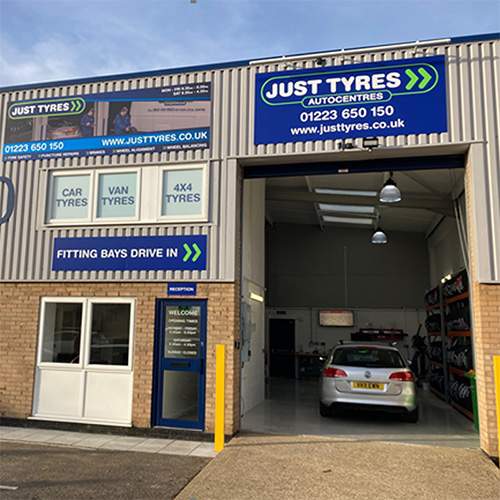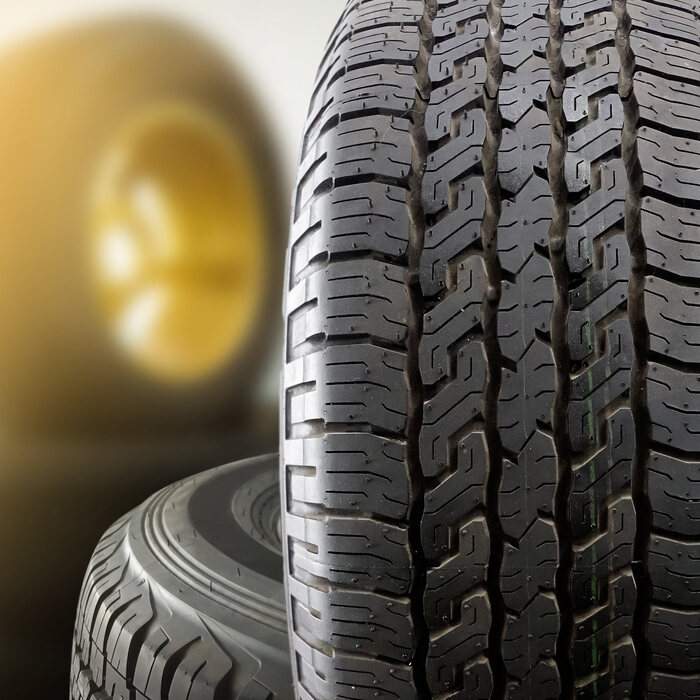HOW TO MEASURE TYRE TREAD
Tyre tread refers to the grooved rubber on the circumference of the tyre, which comes into direct contact with the road. This part of the tyre is essential, with manufacturers developing various tread patterns that affect how the car handles, brakes and performs in various conditions on the road.
As tyres are used, however, the tread is slowly worn away, limiting the effectiveness of the tyre in terms of road traction and driving performance. In this article, we will look at how tyre wear happens, and why measuring your tyre tread is important.
What causes tyre wear?
Tyre wear is a natural part of the lifecycle of all tyres, with the tread slowly becoming shallower over time the longer your car has been on the road. Typically, the lifespan of a good quality tyre is somewhere between three and five years. While this varies between different manufacturers and the amount of miles you cover, the longevity of a tyre is also dependent on a variety of additional factors as well.
First and foremost, it’s important to mention that different tyres wear at different rates, and this is not always linked to the cost of the tyre. For example, expensive high-performance tyres designed for sports cars are likely to wear quicker than more affordable tyres on a family saloon, due to the weight distribution and performance demands associated with each vehicle.
Car owners also have a big impact on tyre wear, with negative driving styles, habits and maintenance potentially contributing to uneven tyre wear.
As we’ve previously discussed, tyre pressure is hugely important when it comes to tyre wear. Under-inflation causes tyres to wear quickly at the sides, while over-inflation means the tyre will wear quickly in the centre, with both shortening the lifespan of your tyres.
Other factors that contribute to uneven tyre wear include driving style, with harsh acceleration and braking leading to excess tyre damage, as well as rapid air loss. Overloading your car with excess passengers or heavy items can also cause your tyres to overheat, which also prematurely increases tyre wear.
Tyre wear can also be caused by wheel alignment, which is linked to the vehicle’s steering and suspension components being misaligned.
The risks of driving with worn tyres
Whether your tyres have been worn down naturally over their lifecycle, or unevenly due to any of the above factors, continuing to drive with worn tyres is a big risk for a number of reasons.
In the UK, the minimum legal tread depth for tyres is 1.6mm, considerably below the 8mm tread on new car tyres. Despite this legal minimum, most motoring organisations and safety experts believe that 1.6mm is not enough to guarantee safety. Therefore it is advised that 2-3mm is the minimum tread depth you should realistically continue to drive on before replacing your tyres.
The chart below shows how much tread wear is safe to drive on:
- 8mm, 7mm, 6mm: Good
- 5mm, 4mm: OK
- 3mm: Inspect monthly
- 2mm: Won't last
According to the UK-based automotive engineering organisation MIRA, once tyre tread is worn below 3mm, stopping distances increase considerably, with the difference between wet braking on a tyre with a 3mm tread and the legal minimum of 1.6mm as much as 44%.
Wet weather is particularly dangerous if you are driving on worn tyres, because the tread pattern is designed to disperse water away from the vehicle, improving contact between the road and your car. As the tread pattern becomes worn, less water can be dispersed, increasing the risk of losing grip and aquaplaning.
In addition to the safety concerns associated with heavily worn tyres, there are serious legal repercussions if you are caught driving with tyres under the minimum legal tread depth.
If your worn down tyres are considered to be ‘dangerous’, you can be fined up to £2,500 with three points added to your license, per tyre. If all four of your tyres are worn under the minimum legal tread depth, you could face a £10,000 fine and 12 penalty points on your license. Any insurance claim as a result of an accident could also be affected by dangerous tyres, meaning your insurer can refuse to pay for any repairs.
Driving with worn tyres can be an extremely costly thing to do - both in terms of financial cost and the safety of yourself and your passengers. So how do you check your tyre tread to ensure this doesn’t happen?
Measuring tyre tread
There are a couple of quick and easy ways you can measure your existing tyre tread. The most straightforward way is to give your tyres a quick visual check, by using the tyre’s treadwear indicators. These are small raised areas that sit in between the grooves of the tread pattern, and indicate how much wear your tyres have accumulated.
On UK tyres, the treadware indicators are set at the minimum legal tread depth of 1.6mm. If the surface of the tyre tread is reaching these raised indicators, then you need to have your tyres checked and replaced as soon as possible.
Another quick method to measure your tyre tread is the ‘20p test’. This involves inserting a 20 pence coin into the lowest tread depth of your tyres. When the coin is inserted, if you can’t see the outer rim of the coin, then your tyre is safe to continue using. If you can see the rim of the 20p coin, however, then this indicates that your remaining tyre tread is less than 3mm and needs to be checked by a professional.
For a more accurate and reliable measurement, you can also use a depth measurement gauge, with this handy tool small enough to keep in your glovebox, and able to give you an exact reading of your current tyre tread. With all of these various techniques, it’s important to measure your tread depth around the whole circumference of the tyre and not just in one place, as tyres don’t always wear evenly.
Tyre treads are a vital part of any tyre, and measuring them is a quick and easy way to ensure you are safe and sound on the road. If your tyres are worn, you can buy new tyres online from us!






 Same Day Fitting. Order By 10:30am
Same Day Fitting. Order By 10:30am
 39 Nationwide Fitting Centres
39 Nationwide Fitting Centres
 5 Year Warranty On All Tyres
5 Year Warranty On All Tyres
 Price Check Promise. Always Great Deals
Price Check Promise. Always Great Deals

 Find a Centre
Find a Centre

